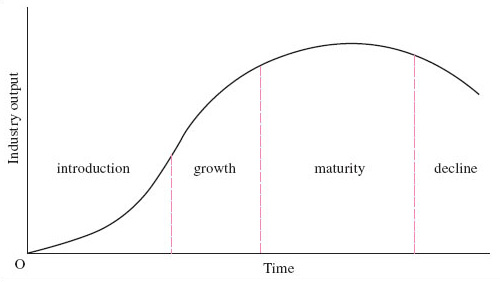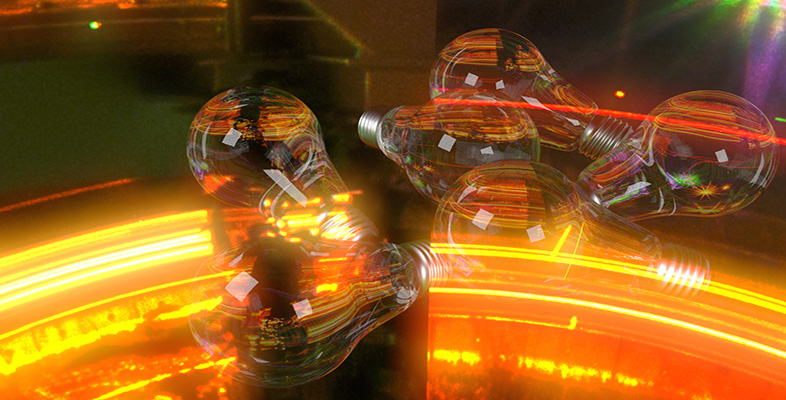4.2 The industry life cycle
The model of the industry life cycle represents an industry as if it were a biological organism going through the stages of birth, growth, maturity and decline. This helps us to understand how a particular firm can become the ‘leader of the pack’ through innovation. In Section 2 it was explained that an economic model is a deliberate simplification of the world, which helps to provide a systematic way of thinking about causal relationships. The industry life cycle is a rather different type of model. The aim is still to provide a systematic way of thinking about economic activity but not by analysing particular interactions between variables. The industry life cycle is instead a systematic way of thinking about general patterns of structural change across different industries. In this sense, the industry life cycle is an ‘ideal type’, enabling us to bring order to the complexity of historical events by classifying them as belonging to this or that phase of an identified pattern of industrial change.
The industry life cycle models industries as following a similar pattern of development as industry output changes, moving from many small and different firms to a few large and similar firms. This change in industrial structure is driven by the interplay between consumer demand and technology throughout the industry life cycle. Section 2 examined some of the influences on market demand and the particular importance of price. In fact, price and non-price factors are of varying importance at different phases of the life cycle. Section 3 analysed the firm's SRAC and LRAC curves, which reflect the technology available to the firm. Costs are of crucial importance to the firm at each phase of the industry life cycle but firms are driven to focus on costs in different ways at different phases.
The model of the industry life cycle is depicted in Figure 8. The curved line traces how the total output of a typical industry changes over time. In this diagram, the total output of the industry is measured along the vertical axis. The horizontal axis shows the passage of time.

The introductory phase is characterised byproduct innovation, that is, the introduction of novel products for which there are no close substitutes. At this stage the scale of production is low, costs are high and demand for the new industry's products is limited to relatively few consumers. There will be considerable variety among firms in the industry, ranging from small firms that are as new as the industry to large firms with established products in other industries that are diversifying into the new one. Some firms will have entered the industry right at the start, while others enter more gradually as the profit opportunities created by the original ‘pioneers’ become clear. This ‘heterogeneity’ among firms, that is, their variety, will be reflected in differences in the technology they use and hence in the costs that they face. Hence technology is no longer understood as ‘given’ and common to all. The experimental nature of production at this stage favours firms that can learn quickly and are therefore able to be more flexible and better able to adjust output rapidly in response to changing conditions. In the introductory phase of the industry life cycle, production is a risky business and firms cannot be sure that their product is exactly what consumers want.
You can see, in Figure 8, that as the industry moves from the introductory phase into the growth phase, the size of the industry, measured in terms of its output, increases. Firms will be able to exploit economies of scale. There is, however, a condition. The selection of 35 mm SLR film cameras and digital cameras shown in Figure 9 holds a clue about the condition for achieving economies of scale.
